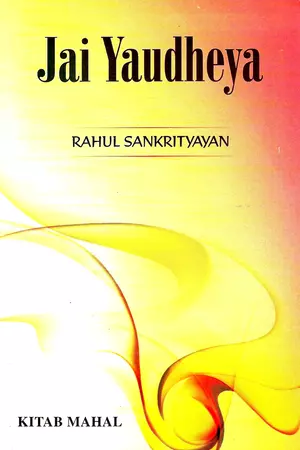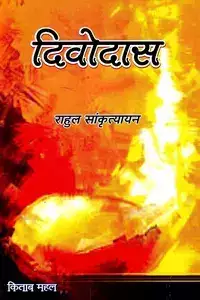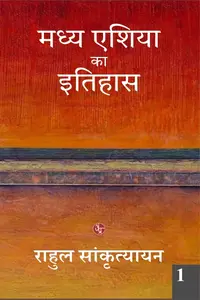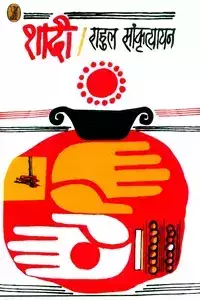|
भाषा एवं साहित्य >> जय यौधेय जय यौधेयराहुल सांकृत्यायन
|
5 पाठक हैं |
|||||||
"Jai Yaudheya : A Forgotten Republic's Struggle for Glory and Survival in the Shadow of Empires"
Preface
“Jai Yaudheya is a historical fiction.” It is a portrayal of the socio-political condition of the period circa 350-400 AD (Gupta Calender 30-80). Yaudheyas were a very powerful republic situated between Yamuna-Sutlej and Chambal-Himalayas. History and our chroniclers from the yore have assumed a very cruel silence about its existence and fate. In fact, if they had their way, even the name ‘Yaudheya’ would have been wiped from the annals of history. We must thank our luck that their coins got buried and survived to tell us the story of this forgotten republic. It is said that dead men tell no tales, but in this instance these humble coins have testified to the heinous crime of deliberate forgetfulness that history has committed upon Yaudheyas. Today, even such distinguished historians as Dr. Altekar of Banaras Hindu University accept that the reign of foreign invaders Kushanas was ended not by the Guptas or Bharshivas but Yaudheyas.
Samudragupta’s inscription upon an Ashokan pillar (earlier at Kaushambi, now placed inside Allahabad fort) mentions Yaudheyas who accepted his sovereignty and were in return exempted from taxation (‘Sarvakaradanagyakaranpranamagaman’). This inscription is a proof that Samudragupta did not abolish the Yaudheya republic, but fifth century onward we now longer come across any reference to this republic which
indicates that most probably it was Vikramaditya who was responsible for its demise.
This work of fiction is the story of the demise of this glorious republic. Historical sources have been used to name the kings, princes and high officials of the Gupta empire. Yaudheyas have been almost wiped from the historical records so I had to rely upon my own imagination to name the characters. For the portrayal of the contemporary society, I have used Kalidasa’s works and the travelogue of the Chinese monk Fa-Hien. Historical works of Dr. Altekar, Prof. Rakhal Das Bannerjee (The Age of Imperial Guptas) and Dr. R.N. Dandekar (A history of fhe Guptas) and the Guptan inscriptions and coins were a great help in gathering information about this period.
Yaudheya coins are found in the time span ranging from 2nd century AD to 4th century AD. Upon the coins from pre- Kushana period, we see the following inscriptions- ‘Yaudheyanan Bahudhanyakanam’ or ‘Bhagawaswami Brahmandevay’ whereas upon
coins from later periods-‘Yaudheya Ganasya Jai’ or ‘Yaudheyanam Jayamantrashalinam’. Mahakshtrapa Rudradaman’s Junagarh inscription (150 AD) pays glowing tributes to the bravery of the Yaudheyas through the following verse- ‘Sarvaksltftavishkritavir- Shabdaja(to) tsekanam Yaudheyanam’. There is an inscription of a Yaudheya supreme commander in the Bayana tehsil of the erstwhile Bharatpur kingdom, it says- ‘Siddham Yaudheyaganapuruskritasya maharaj mahasenapateh pu...brahman purogam chadhishtanam shariradikushalam prishtava likhatyastirasma’ (J F Fleet, Inscriptions of early Gupta kings).
It is a question of conjecture as to whether these brave Yaudheyas were completely wiped out. It is possible that a great number of them would have been killed in the war with Guptas (as we see in case of their descendants, Meos who were slaughtered in great numbers by the Tughlaq), but at least some of them have survived. The stretch of land between Bhawalpur and Multan is still called Johiyawar and the inhabitants are referred to as Johiyas (Yaudheyas). Likewise, Kohistan near Karachi is still inhabited by a people called Johiyas and their chiefs are called Johiya-jo-janm. Meos of Alwar and Gurgaon still inhabit what would once have been the Yaudheya land and their traditional songs of wars and courage fill one’s heart with nostalgia about bygone eras. Today, they have converted to Islam but much of their ancestors’ spirit of independence has survived among them. Their women still sing epics about their men shedding their lives to secure the right to perform well worship for their women.
And what about Agrawals, Agraharis, Rohatagis, Rastogis, Shrimals, Oswals, Varnawals and Gahois ? These mercantile castes too are descendants of Yaudheyas, forced to take to trade after canal in the war with the Guptas.
Historical works have provided the skeleton for this novel whereas I have supplied its muscles and sinews through my own imagination.
- Rahul Sankrityayan
Contents
- Samudra Gupta and the Yaudheyas
- Childhood
- We Travel to Gandhar
- Education
- The Royal Clan
- Last Meeting with Father
- Our Journey to the Himalayas
- Last Years at Patliputra Shipwrecked
- Into the Childhood of Humanity
- Back to the City
- At Kanchi
- At Sinhala
- Love or Sacrifice
- A New Friend
- Vikramaditya’s Ambitions
- First War with Vikramaditya
- New Yaudheyas
- Marriage
- Our Children are Our Only Future
- Kalidas and Yaudheya
- The End
|
|||||














